How to Use: Lumu Power light Meter User Guide

Content

Introduction of Lumu Power light meter
The Lumu Power light meter is a state-of-the-art device designed to help photographers and filmmakers accurately measure light in various environments. This compact and easy-to-use tool is compatible with both iOS and Android devices, making it a versatile solution for professionals and hobbyists alike. With an estimated price range of $250 to $300 and a launch date set for late 2023, the Lumu Power light meter is poised to become a must-have accessory for anyone looking to improve their photography and filmmaking skills.
Detailed Specifications of Lumu Power Light Meter
The Power light meter boasts an impressive range of features, including:
- Three high-precision sensors for measuring ambient light, flashlight, and color temperature.
- Compatibility with both iOS and Android devices via the Lumu app.
- A compact and durable design, with a size of 2.1 x 1.3 x 0.4 inches and a weight of just 0.6 ounces.
- The ability to measure light in a wide range of lux levels, from 0.01 to 250,000 lux.
- A color temperature range of 1,500 to 15,000 Kelvin.
- Integration with popular photography and filmmaking apps, such as Adobe Lightroom and Filmic Pro.
Description of Lumu Power light meter
The Lumu Power light meter is a high-precision tool that allows photographers and filmmakers to accurately measure light in a variety of environments. Using the latest technology and three high-precision sensors, this device can quickly and easily determine the ambient light, flashlight, and color temperature of any scene. The compact and durable design makes it easy to carry around, while the compatibility with both iOS and Android devices ensures that it can be used with a wide range of devices. The Lumu Power light meter also integrates with popular photography and filmmaking apps, making it an even more valuable tool for professionals and hobbyists alike.
Setup Guide of Lumu
Setting up the Power light meter is simple and straightforward. Start by downloading the Lumu app from the App Store or Google Play Store. Once the app is installed, connect the light meter to your device via the headphone jack or Lightning port. Open the app and follow the on-screen instructions to calibrate the light meter and start taking measurements. The app also includes a range of features and settings, allowing you to customize the light meter to your specific needs.
EXPRESS YOURSELF
The main motivation behind making Lumu Power was to help people create better still and moving images. To help them express themselves in new ways. Until now, one had to use multiple tools. They have too many limitations, they are too complex, and take time and effort to use. Lumu Power is - on the other hand - only one device that has the power of many.
We accomplished our mission by creating two things, which have never been accomplished before in the light metering industry
- First light metering hardware which combines Color Temperature, Illuminance, Spot, Ambient and Flash Exposure metering functionality.
- iOS companion app, which is constantly improved, new features added, removed or refined - everything based on the user feedback. It’s the only way to create simple and meaningful user experience.
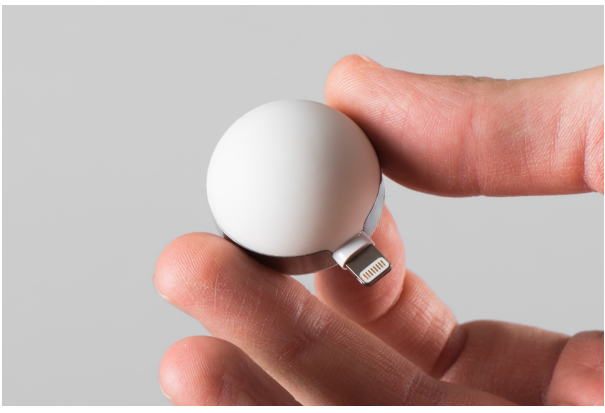
LIGHT METER iOS APP
Picked and promoted by the App Store team as the »photographers must-have «: https://itunes.apple.com/us/app/lumu-light-meter/id730969737?mt=8. The app is free.
Basic app logic
Home Screen
Shows you all available Modes. Gear icon in the top left corner: takes you to the app “General Settings”. Here you can:
- Hide and rearrange Modes, visible on the Home Screen.
- Turn off “Auto app open” (= pop-up message when your Lumu Power is inserted into the iPhone)
- Set app to Dark Theme
- Set measuring button to “CONTINUOUS MEASURING” in all Modes.

Pencil icon in bottom right corner: takes you to all saved measurements.
Each Mode Screen
- On top of the screen, you can see small pictogram -it tells you which side of the Lumu Power is measuring in this particular mode. You can of course plug your Lumu Power in your iOS device in either orientation.
- With the top right icon, you access Mode-specific Settings
- With bottom right Pencil icon, you save the last measurement.
- Bottom left icon is reserved for mode-specific special features.
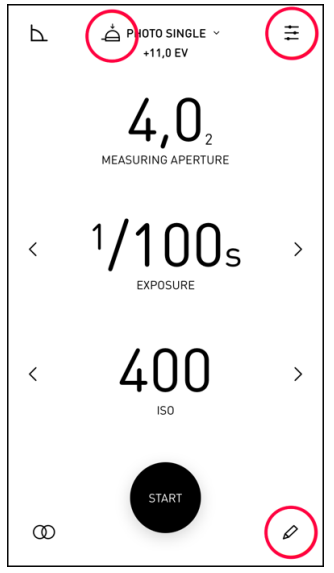
Available modes are briefly explained in the following sections.
PHOTO SPOT METERING Mode
This mode transforms your iPhone into the spot meter. You don't need any Lumu hardware to enable it.
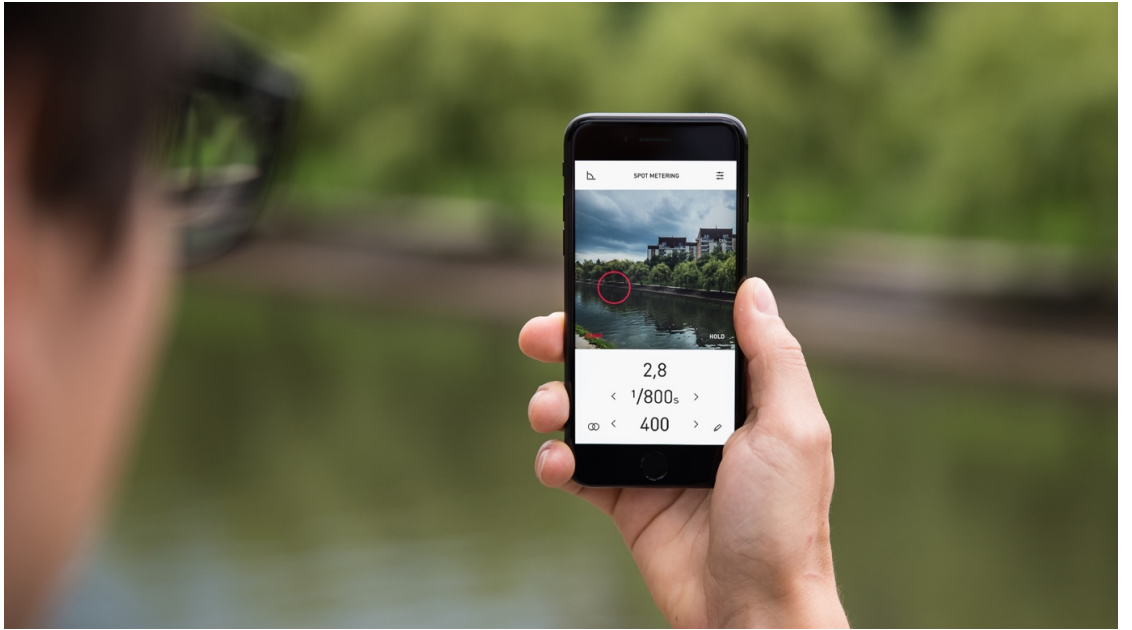
You can measure the exposure of the whole visible frame or only of a small point. When »POINT« is selected, you only measure the exposure within it's area – roughly 10° viewing angle.
Basic gestures, which are used in the PHOTO AMBIENT Mode as well
- You have to tap on the photo parameter (APERTURE / EXPOSURE / ISO) to choose and measure it. The remaining two parameters are locked and you can adjust their value by swiping them left-right or tapping on the < > arrows.
- In the Mode settings, you can choose between different photo parameter steps, define max. Aperture or min. Exposure time, etc.
- Bottom icons reveal you Exposure/Filter compensation or Note saving.
New feature in the next app updates: An option for displaying Cine/Video measuring parameters.
DOME SIDE OF THE LUMU POWER
Lumu Power is an incident light meter, so when measuring Ambient or Flash Exposure you have to place it close to your subject and keep the Dome faced directly towards the camera lens.
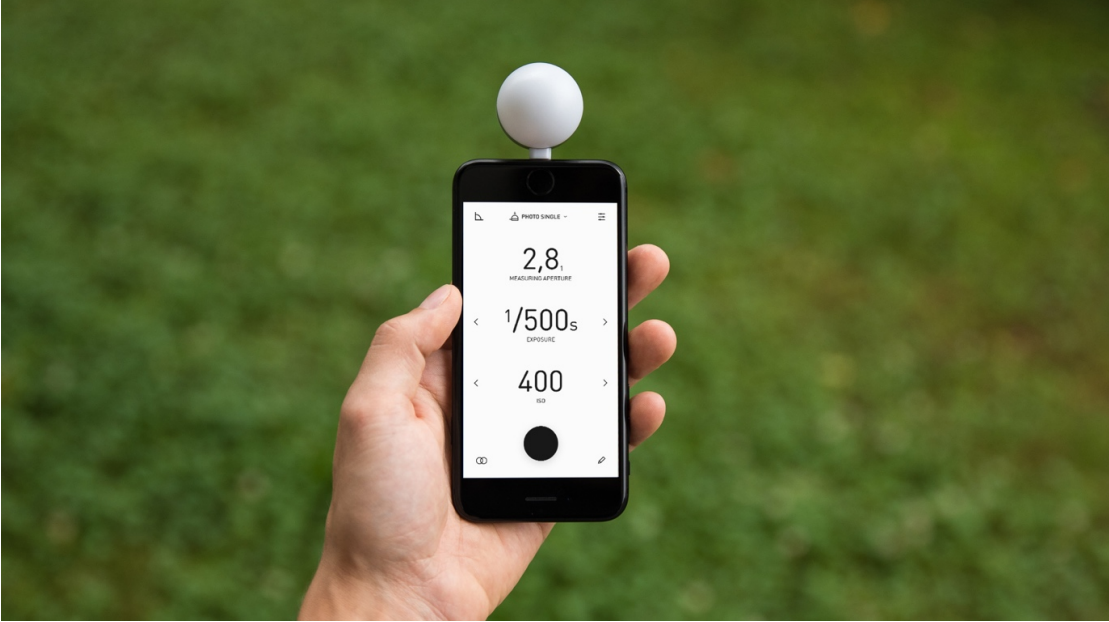
Modes, which use Dome side
PHOTO AMBIENT Mode
Drop down menu on top of the screen reveals additional “MULTI” and “PINHOLE” sub-modes
- “MULTI” will give you the average of multiple measurements or difference between them.
- “PINHOLE” sub mode has built-in reciprocity failure compensation. This is critical when shooting with analog film at longer exposure times. After measurement, you can start a Timer, which will remind you when to close the shutter on your pinhole camera – even if you close the app and put iPhone in the pocket.
PHOTO FLASH Mode
You operate it like the PHOTO AMBIENT Mode.
After you capture a flash, you can adjust parameter values with swiping. App will automatically recalculate all displayed info.
In addition to the standard photo parameters, this mode gives you two additional measurements
"% FLASH" - it tells you how much did light from your flash unit contribute to the total exposure.
Example of the same scene with different Flash vs. Ambient ratio
This ratio can be effectively controlled with changing Exposure Time duration or changing Flash power output.
- Flash curve graph – shows you the light from your flash. The number beneath it is the effective duration of the flash. If you tap on the graph, a detailed view will open.
This info is useful if you do high speed photography (freezing motion, for instance of the water droplets). Some flash units have different effective durations at different power outputs.
New feature in the next app updates: Capability of metering HSS flash, more info in the “flash curve detailed view”.
CINE/VIDEO Mode
In this Mode you always measure APERTURE. If you want to use shutter angle instead of shutter time, you can change that in Mode Settings.
FLAT SIDE OF THE LUMU POWER
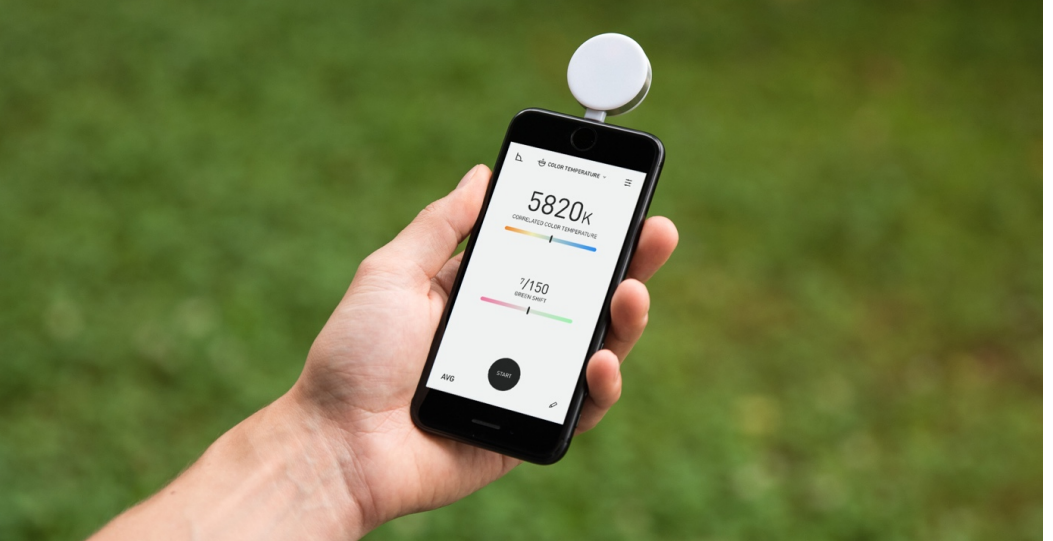
ILLUMINANCE Mode
- AVG icon in the bottom left will plot the graph of the measurement and calculate average illuminance in real time. For this option to be visible, you have to set “CONTINUOUS MEASURING” to ON in the app General Settings.
- You can switch between lux and fc.
COLOR TEMPERATURE Mode
Currently showing GREEN/MAGENTA shift within standard colorimetric boundaries
- If you want to use this measurement with Adobe Lightroom, you should set number of steps to 150, because it has +/-150 steps for Tint compensation.
- If you dial it directly in your camera, check first how many steps does your model have (for instance, Nikon D750 has Tint compensation scale from -21 to +21.
Drop down menu on top of the screen reveals “FILTERS” sub mode, where you can measure a color difference of two different lights. - Color difference is expressed in standard color correction gels nomenclature.
- Both lights can be either measured or have Kelvin value manually inputted.
New features in the next app updates: Option to show GREEN/MAGENTA shift in other scales, such as Wratten numbers, plus green/minus green etc.
CHROMATICITY Mode
Currently only showing chromaticity coordinates in CIE 1931 color space, more will be added in the future app updates.
LUMU POWER DEVICE
Lumu Power incorporates two state-of-the art sensors. True Color sensor, based on the color standard CIE 1931/DIN 5033, and Fast Silicone Photodiode with CIE spectral luminous efficiency. Shape of the Flat and Dome diffusers ensure the correct angular response, as specified in the ISO 2720-1974 (E) standard.
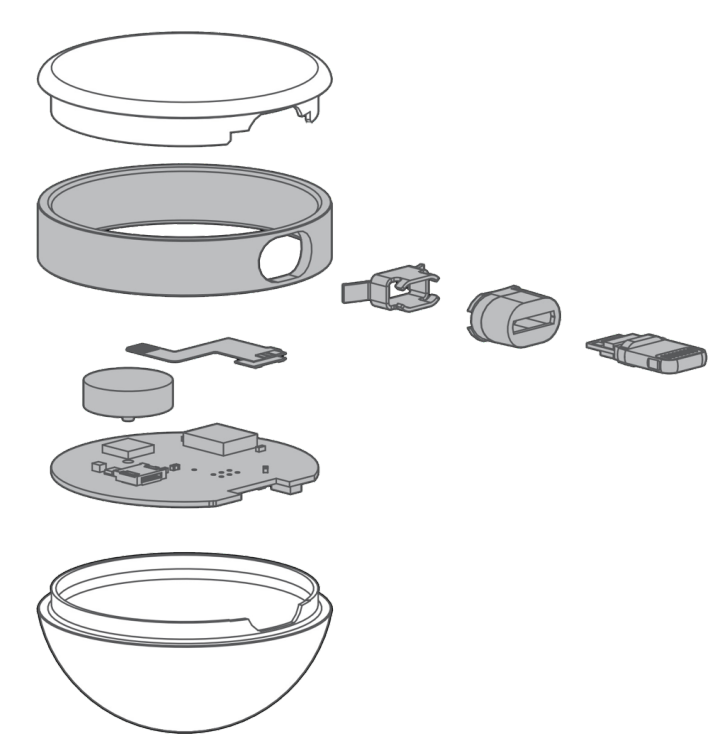
Each light meter has color sensor calibrated with 7 different light sources and photodiode calibrated for response and offsets. Calibration is automatic, each device has its own serial number, all unique raw data along with the calculated calibration constants and matrices are stored securely on the cloud servers. Firmware will be updated automatically through the iOS app. Our work on enhancing the capabilities or accuracy of your Lumu Power never stops.
Tech specs
Color Temperature
- Sensitivity: Visible light
- Dynamic range: 1:1,000,000
- Accuracy: in Kelvin values: 1% at 2,000K, 10% at 20,000K
- Repeatability error: < 1%
- Flat Diffuser, Cosine-type response Exposure
- Measuring range: EV -4 to 20 at ISO 100
- Accuracy: +/- 0.1 EV
- Hemispherical Diffuser, Cardioid-type response
- Flash duration: 1/40,000 - 1/250 s
- Illuminance
- Range: 0.15 - 250,000 lux
- Accuracy: +/- 3%
- Flat Diffuser, Cosine-type response
Other
- Power source: iOS device
- Materials: Housing: Stainless Steel
- Diffusers: Polycarbonate Lexan
- Compatibility: iOS devices using Lightning connector, running iOS 8+
Troubleshooting of Power light meter
If you encounter any issues with the Power light meter, try the following troubleshooting steps:
- Make sure the light meter is securely connected to your device.
- Check that the app is up to date and compatible with your device.
- Try restarting your device and the app.
- Make sure the light meter is calibrated correctly and that you are taking measurements in a well-lit area.
- If the issue persists, contact Lumu support for further assistance.
Pros & Cons of Lumu Power light meter
Pros
- High-precision sensors for accurate light measurements.
- Compatibility with both iOS and Android devices.
- Compact and durable design.
- Integration with popular photography and filmmaking apps.
- Wide range of lux and color temperature measurement capabilities.
Cons
- Higher price point compared to some other light meters on the market.
- May be overkill for casual photographers and filmmakers.
- Requires a compatible device to use.
- The headphone jack connection may not be compatible with some newer devices.
Customer Reviews about Lumu Power Light Meter
The Power light meter has received generally positive reviews from customers, with many praising its accuracy and ease of use. Some common complaints include the higher price point and the fact that it requires a compatible device to use. Overall, the Lumu Power light meter is a high-quality tool that is well-suited for professional photographers and filmmakers who need accurate light measurements.
Faqs
What is a Lumu Power Light Metre, and for whom is it useful?
How should I use my Lumu Power Light Metre at first?
Can flash light be measured with the Lumu Power Light Metre?
In what ways does the Lumu Power Light Metre improve picture shoots?
Can I use the Lumu Power Light Metre on any iOS device?
Is it possible to utilise the Lumu Power Light Metre in low light?
What should I do if the Lumu Power Light Metre isn't detected by my Lumu app?
How can I get exactness with my Lumu Power Light Metre calibration?
How long does the Lumu Power Light Meter's battery last, and does it need to be charged?
Does the Lumu Power Light Metre come with a warranty?
Leave a Comment
